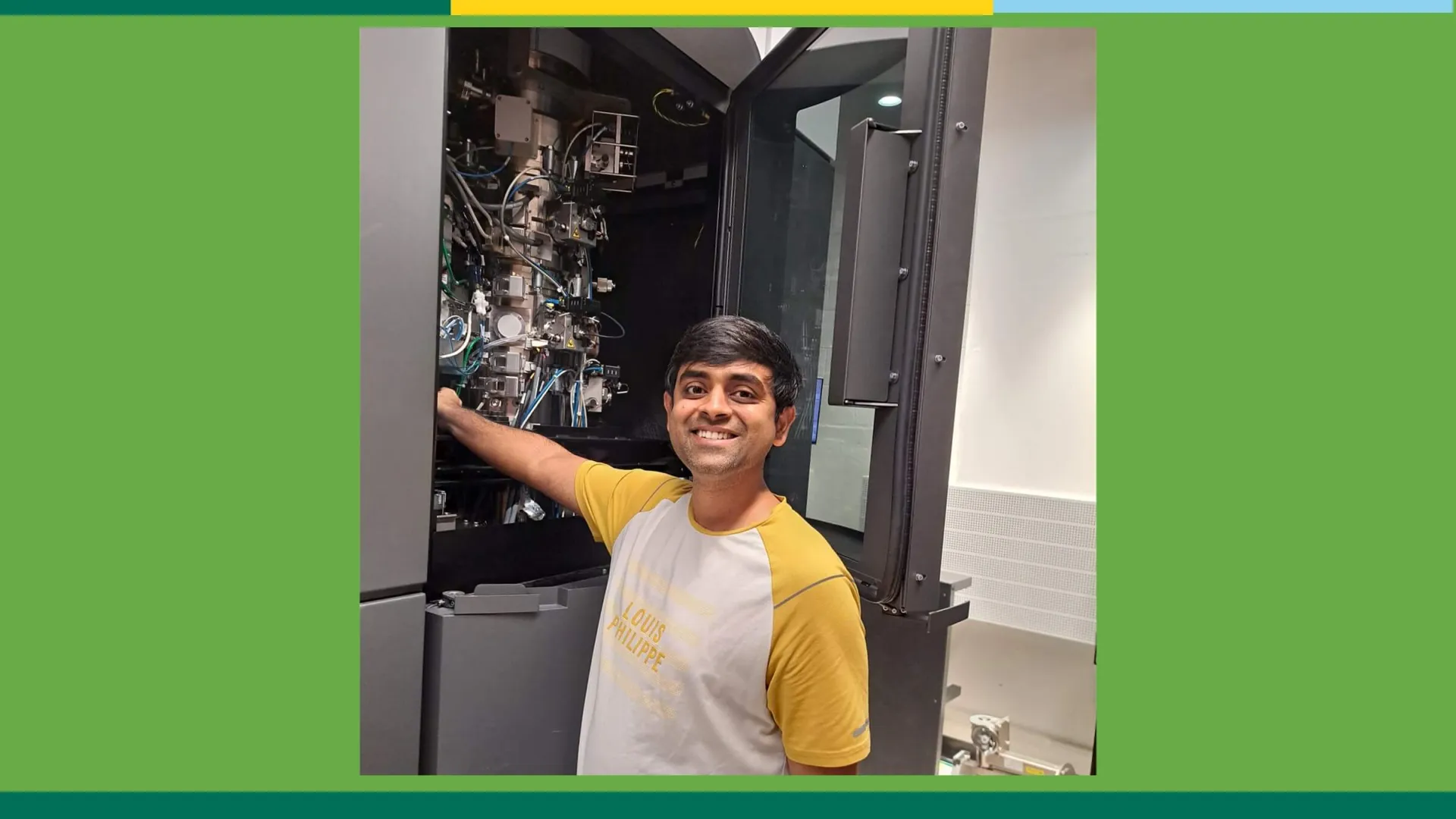Would you tell our readers a little about your background? Anything you'd like to share but also how you became interested in the very specific research that you are doing and what path led you to the University of Vermont?
I was born in Uttar Pradesh, a state in India. My father served in the Indian army as a medical officer. He often moved jobs, so I attended seven different schools throughout my studies. Each new home, new place, and the search for new friends made it a typical childhood adventure. This childhood experience has helped me adapt to new environments more quickly. After completing my high school studies, I moved to the southern part of India to attend Bangalore University. As an undergraduate, I did some research in human genetics to determine which common features are inherited dominantly and recessively in humans. I was surprised to see that, although I look physically very similar to my brother, we have many distinct inherited characteristics from our parents and grandparents, such as tongue rolling, straight/curly hair, and so on. This piqued my interest in learning how the information encoded in DNA bases is controlled. I joined Dr. Dileep Vasudevan's team at the Institute of Life Sciences (Bhubaneswar, India) to investigate the riddle of DNA packing in eukaryotes. I worked in his lab on the structure and function of histone chaperones and discovered their role in DNA packaging. My Ph.D. research work was published in peer-reviewed journals such as Nucleic Acids Research and BBA Gene Regulatory Mechanism. To further deepen my understanding of chromatin biology, I moved to Dr. Karen C. Glass’s lab at the University of Vermont in order to discover how chemical modifications of histone proteins, generally known as epigenetic modifications, manage DNA packing and make it accessible for translation of information contained in its unique DNA sequence. To understand this, I use various cutting-edge structural biology techniques in her lab, such as X-ray crystallography, nuclear magnetic resonance, and cryo-electron microscopy.
Would you briefly describe your research work in the Karen C. Glass Lab at University of Vermont?
Both unicellular and multicellular eukaryotes, including humans, plants, parasites etc., have their DNA condensed into chromosomes. Each chromosome bundle is made up of linear DNA looped into a fundamental complex called the nucleosome, which is composed of histone proteins and DNA. Acetylation, methylation, and other chemical modifications are known to occur on histone proteins. These modifications alter how the histones interact with DNA in the nucleosome, and control how DNA is packaged or compressed into chromosomes. Conserved protein domains known as a bromodomains are known to recognize acetylation modifications on the histone proteins. Proteins that have these domains interact with the nucleosome and are often involved in regulating DNA templated processes such as gene transcription, DNA replication, and DNA repair.
In Dr. Glass’s laboratory, my research is specifically focused on bromodomain-containing proteins in Plasmodium falciparum. P. falciparum is a unicellular eukaryote and is the main cause of malaria cases worldwide. According to a WHO estimate, there were 409,000 recorded global malaria fatalities in 2019, with children under 5 years old being the age group most impacted. There is a pressing need to define the molecular pathways behind pathogenesis in P. falciparum due to this parasite's alarming growth in drug-resistance in recent years. It's interesting to note that the P. falciparum genome encodes eight bromodomain-containing proteins and bromodomain protein 1 (PfBDP1) has been shown to be crucial for the pathogenesis of malaria. My recent publication on the crystal structure of the PfBDP1 bromodomain demonstrated that this protein has a conserved bromodomain fold and can recognize the multiple modifications on histone proteins. These findings will aid in the development of potent drugs to fight against malaria.
When you're not in the lab, what do you enjoy doing in Burlington?
I like to bike, hike, play cricket and tennis, watch American and Indian movies, spend time in nature, and cook.
Was there anything that surprised you about Burlington or UVM?
Over the past year that I've been living in Burlington, I've discovered that it is endowed with a wealth of natural beauty, such as the snowfall in the winter, which feels really unique. It seems like someone is showering a flower on me. The autumn maple tree leaf color shift is really stunning too. Other amazing things include the mountains, Lake Champlain, and maple syrup. I have had numerous opportunities to try new things too, like hiking, kayaking, outdoor cooking, tennis, and many other activities. I'm planning to try skiing for the first time this winter! I have found that UVM has a really welcoming and supportive atmosphere, which is crucial for someone who wants to advance in their profession. This includes my mentor, my department, and my colleagues.
What do you plan as the next step in your career?
I was involved in research early on in my undergraduate studies, and I found it to be quite fascinating an influential to my academic path. I want to work independently as a scientist so that I might instruct students and foster their enthusiasm in science, while simultaneously exploring new and enigmatic aspects of gene regulation in eukaryotic chromatin.
